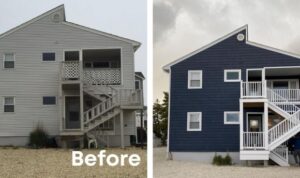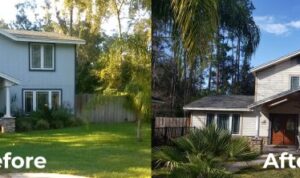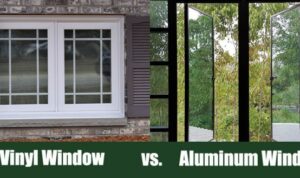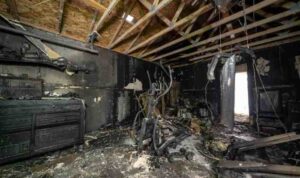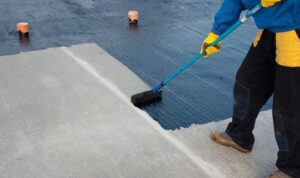When it comes to home exteriors, roofing plays a crucial role in not just providing protection but also enhancing the overall look of your property. In this guide, we will explore the importance of roofing materials, design considerations, and maintenance tips to help you make informed decisions for your home.
Importance of Roofing in Home Exteriors
Roofing plays a crucial role in enhancing the overall curb appeal of a home. It is not just a protective covering but also a key element that contributes to the aesthetic appeal of the property.
Impact of Different Roofing Materials
The choice of roofing material can significantly impact the overall look and feel of a house. For example, a sleek metal roof can give a modern and contemporary appearance, while a classic shingle roof can exude a traditional charm. The color, texture, and style of the roofing material can also complement the architectural style of the home, enhancing its visual appeal.
Importance of Roof Maintenance
Maintaining a well-constructed roof is essential for the longevity of a house. Regular inspections, repairs, and upkeep can prevent costly damages caused by leaks, water infiltration, or structural issues. A well-maintained roof not only protects the interior of the home but also preserves its exterior beauty, ensuring that the property maintains its value over time.
Types of Roofing Materials
Roofing materials play a crucial role in the overall look and durability of a home's exterior. Different types of materials offer varying levels of protection and aesthetic appeal. Let's explore some common roofing materials used in home exteriors:
Asphalt
Asphalt shingles are one of the most popular choices for residential roofing due to their affordability and ease of installation. They come in a variety of colors and styles, making them versatile for different home designs. However, asphalt shingles have a shorter lifespan compared to other materials and may require more frequent maintenance.
Metal
Metal roofing, such as steel or aluminum, is known for its durability and longevity. Metal roofs are resistant to fire, insects, and rot, making them a great choice for homeowners looking for a low-maintenance option. While metal roofs may cost more upfront, they can last up to 50 years or more, making them a cost-effective choice in the long run.
Tile
Tile roofing, commonly made from materials like clay or concrete, offers a unique and timeless look to homes. Tiles are known for their durability and ability to withstand harsh weather conditions. They are also fire-resistant and environmentally friendly. However, tile roofs can be heavy and may require additional structural support.
Wood
Wood shingles or shakes provide a natural and rustic charm to homes. Wood roofing is eco-friendly and offers good insulation properties. However, wood roofs require regular maintenance to prevent issues like rot, mold, and insect infestations. They may also be more susceptible to fire, depending on the treatment.Each of these roofing materials has its own advantages and considerations, so homeowners should carefully consider their priorities and budget when choosing the right material for their home's exterior.
Roofing Design Considerations
When it comes to choosing a roofing design for a specific architectural style, there are several factors to consider to ensure both functionality and aesthetic appeal. The slope of the roof plays a crucial role in how well it sheds water and withstands weather elements, while colors and textures can greatly impact the overall look of a home.
Factors to Consider for Roofing Design
- Architectural Style: Consider the architectural style of your home when choosing a roofing design to ensure it complements the overall look.
- Climate: Take into account the climate of your location to select a roofing design that can withstand extreme weather conditions.
- Budget: Determine your budget for roofing materials and installation to narrow down design options that fit within your financial constraints.
Impact of Roof Slope on Functionality and Aesthetics
- The slope of a roof affects how well it sheds water and prevents leaks, so choosing the right slope is essential for functionality.
- In terms of aesthetics, the slope of a roof can dramatically change the overall look of a home, adding character and style to the architectural design.
- Consider the slope of neighboring homes and the landscape when deciding on the best roof slope for your property.
Selecting Colors and Textures for Roofing
- Choose colors and textures that complement the exterior of your home, including siding, trim, and landscaping elements.
- Consider the architectural style of your home when selecting roofing colors and textures to create a cohesive and visually appealing look.
- Consult with a professional designer or roofing contractor to get expert advice on color schemes and texture options that will enhance the overall appearance of your home.
Maintenance and Repairs
Regular maintenance is crucial to keep your roof in good condition and prevent costly repairs down the line. By following a schedule of inspections and small repairs, you can extend the lifespan of your roof and ensure your home remains protected.
Common Roofing Issues and Solutions
Roofs can face a variety of issues over time, but some of the most common include leaks, missing or damaged shingles, and sagging areas. To address these problems, it's important to conduct regular inspections and address any issues promptly.
- Leak Detection: Use a flashlight to inspect your attic for any signs of water intrusion. Look for water stains, mold, or mildew, and trace the source of the leak to repair it.
- Missing or Damaged Shingles: Replace any missing or damaged shingles to prevent water from seeping into your home. Secure loose shingles and seal any gaps to maintain a watertight seal.
- Sagging Roof Areas: Sagging areas can indicate structural issues or water damage. Address these areas promptly to prevent further damage and ensure the structural integrity of your roof.
Repair vs. Replacement
Knowing when to repair or replace your roof is essential to prevent further damage and maintain the safety of your home. While minor repairs can address isolated issues, more extensive damage may require a full replacement.
- Repair: Small repairs, such as fixing a few missing shingles or sealing minor leaks, can extend the lifespan of your roof and prevent larger issues from developing.
- Replacement: If your roof is nearing the end of its lifespan, has significant damage, or multiple areas are in need of repair, it may be more cost-effective to replace the entire roof. Consult with a professional roofer to assess the condition of your roof and determine the best course of action.
Ultimate Conclusion
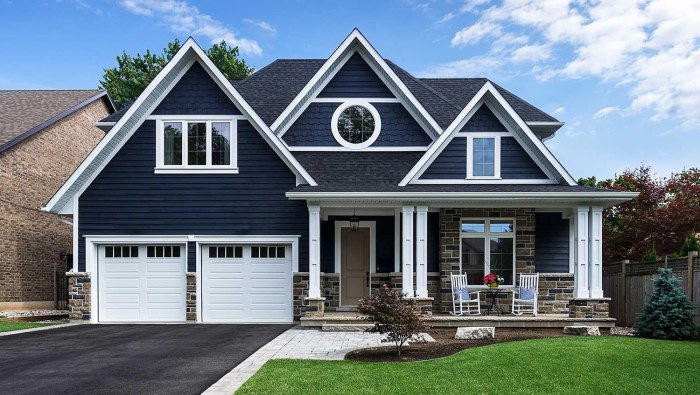
In conclusion, the right roofing can truly transform the appearance of your home exteriors, adding both beauty and functionality. By understanding the various aspects of roofing discussed in this guide, you can ensure that your home remains a safe and visually appealing space for years to come.
FAQ Summary
How does roofing impact curb appeal?
Roofing can significantly enhance curb appeal by complementing the overall style and architecture of a home, creating a striking visual impact.
What are some common roofing materials used for home exteriors?
Common roofing materials include asphalt, metal, tile, and wood, each offering unique benefits in terms of durability and aesthetics.
What factors should be considered when choosing a roofing design?
Factors such as architectural style, slope of the roof, and color and texture choices play a key role in selecting a roofing design that harmonizes with the overall look of a home.
How often should roofing maintenance be conducted?
Regular maintenance is essential to keep the roof in good condition. It is recommended to inspect and maintain the roof at least twice a year.
When is it necessary to repair or replace a roof?
Roof repair or replacement may be necessary if issues like leaks, missing shingles, or structural damage are present, to prevent further damage to the home.

